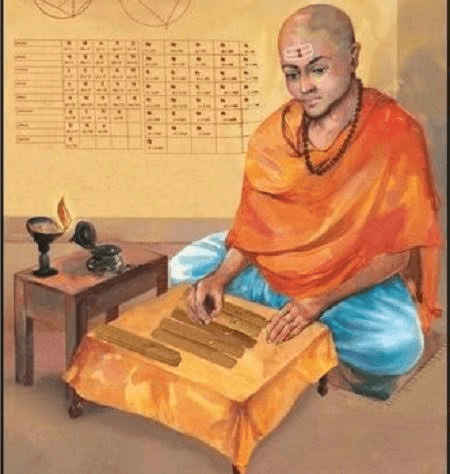Brāhmasphuṭasiddhānta: India's Ancient Mathematical Masterpiece
Introduction:
Brāhmasphuṭasiddhānta, also known as the Brāhma Siddhānta, is an ancient Indian mathematical treatise that laid the foundation for numerous mathematical concepts. Composed by the mathematician and astronomer Brahmagupta, this work remains a cornerstone of Indian mathematics, serving as a guide for scholars even centuries after its creation. In this article, we will explore the Brāhmasphuṭasiddhānta by delving into its author, contents, influence, and provide answers to frequently asked questions regarding this remarkable mathematical masterpiece.
1. About the Author - Brahmagupta:
Brahmagupta, born in 598 CE in Ujjain, India, was a renowned mathematician, astronomer, and writer. He is widely recognized for his contributions to the field of mathematics, primarily through his work Brāhmasphuṭasiddhānta. Brahmagupta's expertise in astronomy allowed him to make important observations and calculations, further enhancing the accuracy of his mathematical theories.
2. Contents of Brāhmasphuṭasiddhānta:
Brāhmasphuṭasiddhānta covers various mathematical topics, including arithmetic, algebra, geometry, and trigonometry. Some significant topics discussed within the treatise are numerical operations, fractions, algebraic equations, quadratic equations, geometric measurements, and more. It also includes calculations related to astronomical phenomena, such as the prediction of solar and lunar eclipses.
3. Influence and Legacy:
The Brāhmasphuṭasiddhānta had a profound impact on the field of mathematics in India and beyond. It introduced new and efficient techniques for calculations, such as the concept of zero, the decimal system, and negative numbers. The work served as a crucial source of mathematical knowledge and became a reference for later mathematicians and scholars. It influenced the development of Islamic mathematics, and its concepts eventually made their way to Europe during the Middle Ages.
Frequently Asked Questions:
1. What is the Brāhmasphuṭasiddhānta?
The Brāhmasphuṭasiddhānta is an ancient Indian mathematical treatise composed by Brahmagupta, covering various mathematical topics.
2. When was the Brāhmasphuṭasiddhānta written?
The Brāhmasphuṭasiddhānta was written around the 7th century CE.
3. What are the key topics covered in Brāhmasphuṭasiddhānta?
The Brāhmasphuṭasiddhānta covers arithmetic, algebra, geometry, trigonometry, and astronomical calculations related to solar and lunar eclipses.
4. How did Brāhmasphuṭasiddhānta influence future mathematics?
It introduced the concept of zero, negative numbers, and the decimal system, which had a profound impact on mathematics worldwide.
5. Did the Brāhmasphuṭasiddhānta influence other cultures?
Yes, it influenced Islamic mathematics and later made its way to Europe during the Middle Ages.
6. What are some unique contributions of Brāhmasphuṭasiddhānta?
The treatise provided efficient solution techniques for quadratic equations and geometric measurements.
7. How does the Brāhmasphuṭasiddhānta compare to other mathematical works of its time?
It stands out for its comprehensive coverage of various mathematical topics and its emphasis on practical applications.
8. Is the Brāhmasphuṭasiddhānta still relevant today?
Although some concepts have evolved, the treatise still holds significance as a historical reference and serves as a precursor to contemporary mathematical ideas.
9. Are there any translations available in English?
Yes, several English translations of the Brāhmasphuṭasiddhānta exist, making it accessible to a broader audience.
10. How did the Brāhmasphuṭasiddhānta contribute to Indian astronomy?
The treatise offered calculations related to solar and lunar eclipses, aiding astronomers in making accurate observations.
Conclusion:
The Brāhmasphuṭasiddhānta, authored by the remarkable mathematician Brahmagupta, revolutionized the field of mathematics with its advanced concepts and practical applications. Its influence extended beyond Indian mathematics, impacting scholars worldwide. This ancient treatise continues to inspire mathematicians and serve as a testament to the rich mathematical heritage of India, propelling humanity towards a deeper understanding of the complexities of the universe.


Comments
Post a Comment